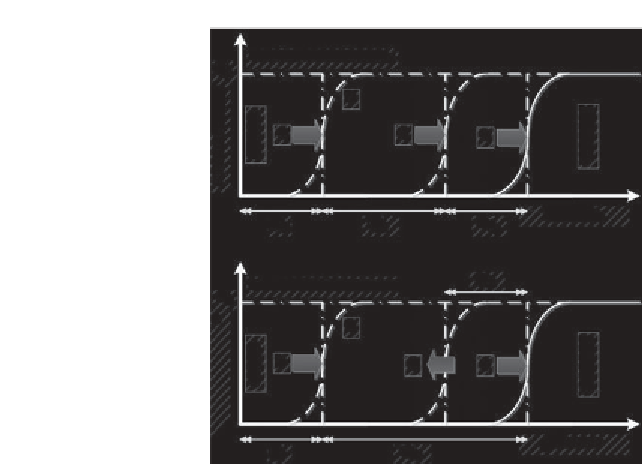Environmental Engineering Reference
In-Depth Information
(
a
)
Initial Concentration
C
0
2
1
3
4
Distance
X
h
X
e
X
m
(
b
)
X
m
Initial Concentration
C
0
2
1
4
3
Distance
X
h
X
e
1. Hydraulic advection X
h
= (K
h
i
h
)T
2. Diffusion
4. Ion migration X
m
= (u*i
e
)T
3. Electroosmosis X
e
= (K
e
i
e
)T
Figure 5.1
Transport mechanisms of (a) cations and (b) anions (After Acar et al., 1997)
Further simplification of equation 5.9 results in:
(
)
∇−
(
)
+
(
)
+∇−
(
)
*
*
(5.10)
J
=∇−
D
C CDk
+
ECk
h
i
i
i
i
i
eo
i
h
For one dimensional flow, the total mass flux of species i, is given by:
( )
cx
x
∂
∂
∂
E
x
∂
∂
h
x
(
)
( )
=−
i
(5.11)
Jx
D
*
−
CD k
*
+
−
Ck
i
i
i
i
eo
i
h
∂
As equation 5.10 implies, an applied electrical gradient results in two
mass transport mechanisms, ion migration and EO advection. The relative
contribution of the two mechanisms to species transport depends on soil
and contaminant characteristics (Acar et al., 1997; Cao, 1997). Presence
and content of clay minerals, the ionic strength of pore fluid, and pH sig-
nificantly affects the EO flow. For instance, acidic pore fluid conditions
could reverse the charge on the clay mineral surface, and consequently the
direction of EO flow (Lorenz 1969; Hunter 1981; Stumm 1992; Eykholt

















Search WWH ::

Custom Search